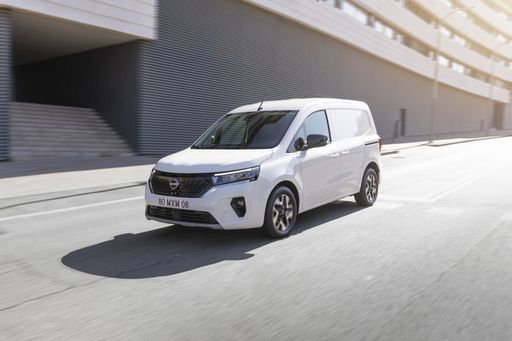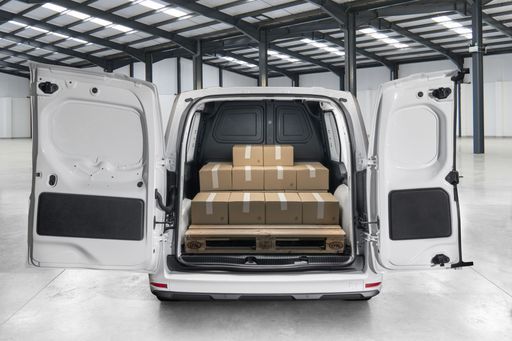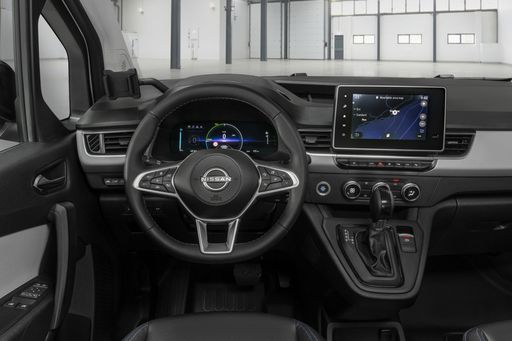Alfa Romeo Junior vs Nissan Townstar – Differences & prices compared
Both models have their strengths – but which one suits you more?
Compare performance, efficiency, price and space directly: Alfa Romeo Junior or Nissan Townstar?
Costs and Efficiency:
When it comes to price and running costs, the biggest differences usually appear. This is often where you see which car fits your budget better in the long run.
Alfa Romeo Junior has a barely noticeable advantage in terms of price – it starts at 25700 £, while the Nissan Townstar costs 25700 £. That’s a price difference of around 34 £.
Fuel consumption also shows a difference: Alfa Romeo Junior manages with 4.80 L and is therefore noticeable more efficient than the Nissan Townstar with 6.70 L. The difference is about 1.90 L per 100 km.
In terms of energy consumption, the advantage goes to the Alfa Romeo Junior: with 15.10 kWh per 100 km, it’s clearly perceptible more efficient than the Nissan Townstar with 19.30 kWh. That’s a difference of about 4.20 kWh.
As for range, the Alfa Romeo Junior performs noticeable better – achieving up to 410 km, about 129 km more than the Nissan Townstar.
Engine and Performance:
Power, torque and acceleration are the classic benchmarks for car enthusiasts – and here, some clear differences start to show.
When it comes to engine power, the Alfa Romeo Junior has a convincingly edge – offering 280 HP compared to 130 HP. That’s roughly 150 HP more horsepower.
In acceleration from 0 to 100 km/h, the Alfa Romeo Junior is significantly quicker – completing the sprint in 5.90 s, while the Nissan Townstar takes 12.60 s. That’s about 6.70 s faster.
In terms of top speed, the Alfa Romeo Junior performs to a small extent better – reaching 206 km/h, while the Nissan Townstar tops out at 183 km/h. The difference is around 23 km/h.
There’s also a difference in torque: Alfa Romeo Junior pulls distinct stronger with 345 Nm compared to 245 Nm. That’s about 100 Nm difference.
Space and Everyday Use:
Whether family car or daily driver – which one offers more room, flexibility and comfort?
Seats: Nissan Townstar offers distinct more seating capacity – 7 vs 5.
In curb weight, Alfa Romeo Junior is barely noticeable lighter – 1380 kg compared to 1509 kg. The difference is around 129 kg.
In terms of boot space, the Nissan Townstar offers decisively more room – 775 L compared to 415 L. That’s a difference of about 360 L.
In maximum load capacity, the Nissan Townstar performs significantly better – up to 3050 L, which is about 1770 L more than the Alfa Romeo Junior.
When it comes to payload, Nissan Townstar clearly perceptible takes the win – 641 kg compared to 420 kg. That’s a difference of about 221 kg.
Who wins the race?
The Alfa Romeo Junior proves to be leaves the rival little chance and therefore becomes our DriveDuel Champion!
Alfa Romeo Junior is the better all-rounder in this comparison.
 @ Alfa Romeo / Stellantis Media
@ Alfa Romeo / Stellantis Media
Alfa Romeo Junior
Alfa Romeo Junior
The Alfa Romeo Junior captures the essence of Italian design with its sleek lines and compact dimensions, making it an icon of elegance and performance. With a spirited driving experience and a charming retro aesthetic, it appeals to enthusiasts and casual drivers alike. This delightful car embodies the brand's rich heritage while remaining a fun and engaging option for those seeking a unique automotive experience.
details @ Alfa Romeo / Stellantis Media
@ Alfa Romeo / Stellantis Media
 @ Alfa Romeo / Stellantis Media
@ Alfa Romeo / Stellantis Media
 @ Alfa Romeo / Stellantis Media
@ Alfa Romeo / Stellantis Media
Nissan Townstar
The Nissan Townstar presents a versatile option for those in need of ample cargo space and practicality. Its modern design and robust performance make it an attractive choice for both business and family use. With a focus on comfort and technological features, it caters to a wide range of transport needs.
details @ Nissan Motor Corporation
@ Nissan Motor Corporation
 @ Nissan Motor Corporation
@ Nissan Motor Corporation
 @ Nissan Motor Corporation
@ Nissan Motor Corporation
 @ Alfa Romeo / Stellantis Media
@ Alfa Romeo / Stellantis Media
|
 @ Nissan Motor Corporation
@ Nissan Motor Corporation
|
|
|
|
Costs and Consumption |
|
|---|---|
|
Price
25700 - 41600 £
|
Price
25700 - 37700 £
|
|
Consumption L/100km
4.8 - 5.4 L
|
Consumption L/100km
6.7 - 7 L
|
|
Consumption kWh/100km
15.1 - 17.5 kWh
|
Consumption kWh/100km
19.3 - 20.7 kWh
|
|
Electric Range
344 - 410 km
|
Electric Range
265 - 281 km
|
|
Battery Capacity
0.4 - 51 kWh
|
Battery Capacity
45 kWh
|
|
co2
0 - 119 g/km
|
co2
0 - 157 g/km
|
|
Fuel tank capacity
44 - 45 L
|
Fuel tank capacity
54 L
|
Dimensions and Body |
|
|---|---|
|
Body Type
SUV
|
Body Type
High Roof Estate
|
|
Seats
5
|
Seats
5 - 7
|
|
Doors
5
|
Doors
5
|
|
Curb weight
1380 - 1689 kg
|
Curb weight
1509 - 2041 kg
|
|
Trunk capacity
340 - 415 L
|
Trunk capacity
0 - 775 L
|
|
Length
4173 mm
|
Length
4488 - 4911 mm
|
|
Width
1781 mm
|
Width
1859 - 1860 mm
|
|
Height
1505 - 1538 mm
|
Height
1838 - 1869 mm
|
|
Max trunk capacity
1205 - 1280 L
|
Max trunk capacity
2800 - 3050 L
|
|
Payload
390 - 420 kg
|
Payload
506 - 641 kg
|
Engine and Performance |
|
|---|---|
|
Engine Type
Electric, Petrol MHEV
|
Engine Type
Petrol, Electric
|
|
Transmission
Automatic
|
Transmission
Manuel, Automatic
|
|
Transmission Detail
Dual-Clutch Automatic, Reduction Gearbox
|
Transmission Detail
Manual Gearbox, Dual-Clutch Automatic, Reduction Gearbox
|
|
Drive Type
Front-Wheel Drive, All-Wheel Drive
|
Drive Type
Front-Wheel Drive
|
|
Power HP
136 - 280 HP
|
Power HP
122 - 130 HP
|
|
Acceleration 0-100km/h
5.9 - 9.1 s
|
Acceleration 0-100km/h
12.6 - 13.3 s
|
|
Max Speed
150 - 206 km/h
|
Max Speed
130 - 183 km/h
|
|
Torque
230 - 345 Nm
|
Torque
240 - 245 Nm
|
|
Number of Cylinders
3
|
Number of Cylinders
4
|
|
Power kW
100 - 207 kW
|
Power kW
90 - 96 kW
|
|
Engine capacity
1199 cm3
|
Engine capacity
1332 cm3
|
General |
|
|---|---|
|
Model Year
2024 - 2025
|
Model Year
2023 - 2025
|
|
CO2 Efficiency Class
A, C, D
|
CO2 Efficiency Class
E, F, A
|
|
Brand
Alfa Romeo
|
Brand
Nissan
|
What drive types are available for the Alfa Romeo Junior?
Available configurations include Front-Wheel Drive or All-Wheel Drive.
The prices and data displayed are estimates based on German list prices and may vary by country. This information is not legally binding.
